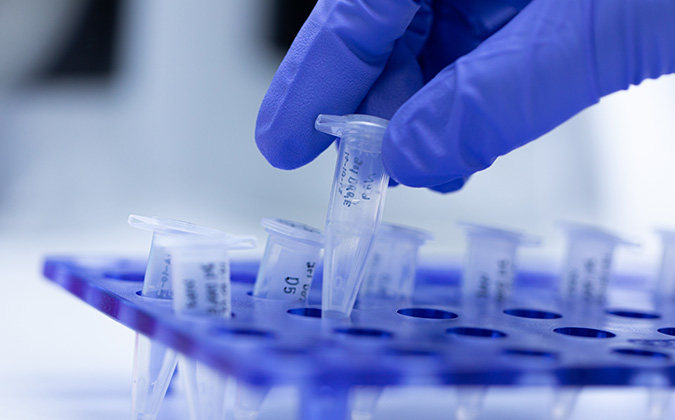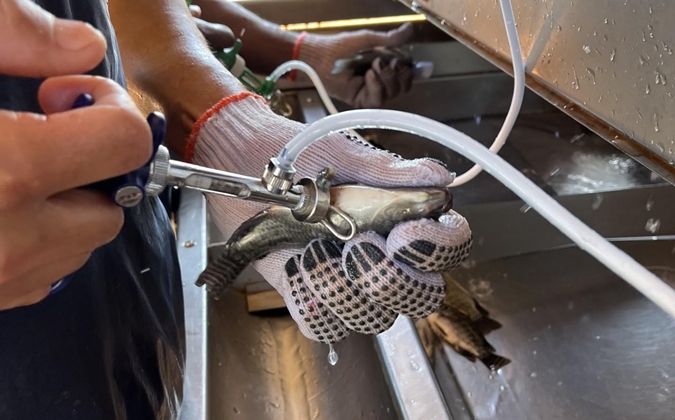
Fish Farm Forum is pleased to host this editorial page on behalf of Pharmaq.
Pharmaq
Scientists delve into rising incidence of mycobacteriosis on Norwegian salmon farms
Cases of mycobacteriosis, a serious disease affecting Atlantic salmon predominantly related to Mycobacterium salmoniphilum infections, appear to be on the increase in Norway.
A retrospective study examining the records of PHARMAQ Analytiq Norway between 2018 and 2022 suggests that there was a rise in positive diagnoses over the time period, with a steeper increase during 2021.
Spike prompts further analysis
Previous to the study’s starting year of 2018, the disease had only made sporadic appearances in diagnostic records.
“What started our work was that during 2021, we noticed that we had quite a few cases of mycobacteriosis, which was different compared to previous years when we had few. This spiked our interest, and we began to work more systematically through the data,” explained William Reed, veterinary pathologist for PHARMAQ Analytiq, who led the research.
As well as looking at the numbers, the scientists set out to confirm the suspected cases, describe the changes seen in disease outbreaks and detail some of the background to the cases, such as the type of sites and geography where they occurred.
RAS risks
One notable observation was repeated cases in recirculating aquaculture system (RAS) facilities, while at sea sites, incidences were mainly isolated.
A theory is that once the mycobacteria manage to get inside the facility, they can establish themselves in the biofilter, where they can colonize and thrive, Reed said.
“We also know from the literature that once mycobacteria colonize, they’re incredibly difficult to get rid of. So even though you may disinfect and clean the biofilter, it may not be completely successful, and potentially from there they can infect several generations of salmon before they get transferred to sea.”
Results hint at disease’s progress
The majority of the 35 cases (31) included in the work were found to be chronic — as has mainly been described in work on the disease to date. However, four cases were acute, showing more severe damage to fish organs and tissues.
One possible explanation is that the bacteria enter the blood stream and reach different organs, but that most individuals don’t develop acute, clinical disease, Reed suggested. Then, the immune system of fish with acute disease gets overloaded because of factors including stress, immunosuppression, other disease, and/or exposure to a high number of bacteria.
Although the severity of outbreaks can vary considerably and diagnoses are still currently at a fairly low level, the fact that mycobacteriosis can be lethal to fish means that rising numbers of cases would be of some interest to producers and veterinarians. There have also been suggestions from other research groups that climate conditions may favor the disease becoming more commonly seen over the coming years.1
“Some studies lately have raised concern over mycobacteriosis being an emerging disease, with climate change as a potential cause,” Reed said.
In the case of incidences in RAS, even though the systems can recycle most of the water and control its temperature, water is still pumped from an intake source. It is these sources that may be affected by climate change, he suggested, so if there is an increased number of mycobacteria in the intake water there is also an increased chance of mycobacteria entering the system.
“It may or may not be connected, but at the moment we really are not sure,” he noted.
Simpler screening presents opportunities
As yet, the implications of the work for producers remains unclear. However, the fact that PCR testing is now available for mycobacteriosis has made it easier to screen for the disease, whereas in the past detection involved a much more time-consuming process.
More screening would help establish the bigger picture of prevalence across Norway, while further knowledge is needed about how contagious the disease is when present on sites. This information would contribute to improving fish welfare across the industry, he added.
You can read the full study in Journal of Fish Diseases.
1 Davidovich N, Morick D, Carella F. Mycobacteriosis in Aquatic Invertebrates: A Review of Its Emergence. Microorganisms. 2020;8:1249. https://doi.org/10.3390/microorganisms8081249
Posted on: July 31, 2023







